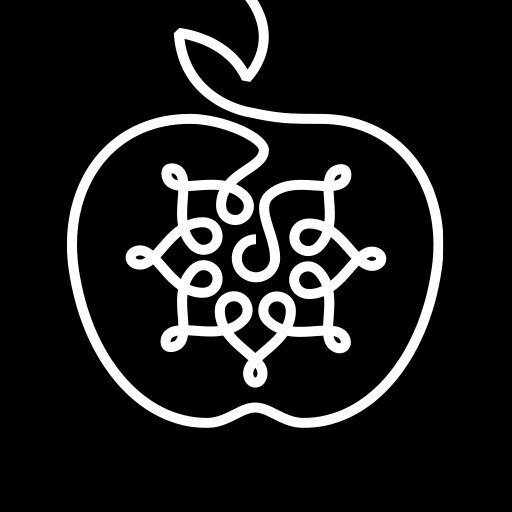How Tatar writing developed and why the letters Ә, Ө, Ү, Җ и Һ were chosen for this series
How a few very different artists interpreted traditional Tatar motifs
Authors
39 Stroiteley Prospekt
37 Stroiteley Prospekt,
35 Stroiteley Prospect
37 Stroiteley Prospekt,
35 Stroiteley Prospect
ABC Book
Әлифба
Context
The five walls of the three buildings along Stroiteley Avenue are illustrated pages of an ABC book with letters from the Tatar alphabet Ә, Ө, Ү, Җ, Һ and the words that begin with them. And another painting is a work devoted to the ABC book itself, a book by which the basics of literacy are studied.
Process
Ital. Mural — wall
Monumental wall painting created on a faсade or a blank wall of a building or any other urban architectural objects.
Monumental wall painting created on a faсade or a blank wall of a building or any other urban architectural objects.
ABC books from the Elkhovo village museum.
Curatorial group examines building façades for possible mural locations.



ABC books from the Elkhovo village museum.

Curatorial group examines building façades for possible mural locations.
Author
This is the title work of the entire ABC book series (Elifba) — in it Dmitry Fatum created a simple and understandable image of how a native language preserves the memory of generations. Against the backdrop of a typical Tatar landscape, a teacher and students have settled around the alphabet. The teacher's costume references Tatar educators of the XIX century, while the children's clothes are completely modern. A flower of knowledge grows from the book. The vignette at the top of the book page was created based on a traditional Tatar ornament.


Having received a classical academic education at the Taras Shevchenko Art School, where he studied easel painting, Fatum began to paint on the streets. Then, exhibitions in galleries were added to street art — the artist did not completely abandon the canvas. His first solo exhibition was held in Odessa in 2011. Now Dmitry works as a muralist.
Work from the Art United Us Festival. Kiev, 2016.
Having received a classical academic education at the Taras Shevchenko Art School, where he studied easel painting, Fatum began to paint on the streets. Then, exhibitions in galleries were added to street art — the artist did not completely abandon the canvas. His first solo exhibition was held in Odessa in 2011. Now Dmitry works as a muralist.

Work from the Art United Us Festival. Kiev, 2016.
39 STROITELEY PROSPECT
Grow
Үстерү
Natalya Pastukhova (Ekaterinburg)
Author
Yekaterinburg artist Natalya Pastukhova from got the letter Ү and the word үsterү («grow»). A pair of horses framed by a vignette of flowers based on Tatar embroidery is an allegory of a young family that cultivates their feelings.
«I decided to interpret this word through the image of a horse. Horses are often significant heroes for the Tatar culture, participants in many myths and legends. With the help of horses and floral patterns, I wanted to show that you can grow not only flowers and plants, but also warm feelings in yourself», says the artist.
«I decided to interpret this word through the image of a horse. Horses are often significant heroes for the Tatar culture, participants in many myths and legends. With the help of horses and floral patterns, I wanted to show that you can grow not only flowers and plants, but also warm feelings in yourself», says the artist.

Sketches.
Sketches.

Natalya Pastukhova is not only an illustrator and designer (she graduated from the undergraduate program at the University of Huddersfield and studied Industrial Design at the Ural State University of Architecture and Art), but is also a teacher. She oversees various children's programs, teaches book and magazines publishing, make costumes of fantastic creatures, and draws with children with disabilities.
The artist has been engaged in street art for a long time: her porfolio includes murals of commercial and residential buildings in Yekaterinburg and Perm, on the Yamal Peninsula, in Novotroitsk, Novosibirsk and many other places. Natalia is also involved in branding and space design. Her work includes the IKEA bistro and parking lot in Finland.
The artist has been engaged in street art for a long time: her porfolio includes murals of commercial and residential buildings in Yekaterinburg and Perm, on the Yamal Peninsula, in Novotroitsk, Novosibirsk and many other places. Natalia is also involved in branding and space design. Her work includes the IKEA bistro and parking lot in Finland.
Cotton candy stand in Ekaterinburg, 2018.
Natalya Pastukhova is not only an illustrator and designer (she graduated from the undergraduate program at the University of Huddersfield and studied Industrial Design at the Ural State University of Architecture and Art), but is also a teacher. She oversees various children's programs, teaches book and magazines publishing, make costumes of fantastic creatures, and draws with children with disabilities.
The artist has been engaged in street art for a long time: her porfolio includes murals of commercial and residential buildings in Yekaterinburg and Perm, on the Yamal Peninsula, in Novotroitsk, Novosibirsk and many other places. Natalia is also involved in branding and space design. Her work includes the IKEA bistro and parking lot in Finland.
The artist has been engaged in street art for a long time: her porfolio includes murals of commercial and residential buildings in Yekaterinburg and Perm, on the Yamal Peninsula, in Novotroitsk, Novosibirsk and many other places. Natalia is also involved in branding and space design. Her work includes the IKEA bistro and parking lot in Finland.

Cotton candy stand in Ekaterinburg, 2018.
37 PROSPECT STROITELIEY
Ability
Һөнәр
Güzel Garipova (Kazan)
Author
Illustrator Güzel Garipova got the word Һeнeр («ability»). In her work, she combined a modern skatepark with a traditional Tatar holiday. In her drawing there is a heap of kids, where each child performs tasks typical for competitions at the Sabantuy festival: children walk along an inclined log, climb up to the top of the pillar behind a rooster, fight with bags, run around with a chicken egg in a spoon, engage in national Tatar wrestling kuresh, cut threads blindfolded and dance.
For our project, Güzel worked for the first time in a monumental format, and the illustration for the ABC book is her first work on the mural, finalized by the St. Petersburg graffiti writers Nikita Dusto and Yegor Shen.
For our project, Güzel worked for the first time in a monumental format, and the illustration for the ABC book is her first work on the mural, finalized by the St. Petersburg graffiti writers Nikita Dusto and Yegor Shen.

Working on the mural. Almetyevsk, 2018.
Working on the mural. Almetyevsk, 2018.

Güzel Garipova — illustrator, designer and artist from Kazan. She illustrates children's books, works with fairy tales and Tatar folk legends, publishes board games and guides, teaches adults and children. Güzel often works on the whole book — from illustrations to typesetting.
Recently, she designed a collection of fairy tales by Abdullah Alish and a fairy tale by Yoldiz Minnullina «Hay kizi Zohre» based on a Tatar legend about a girl saved by the stars from her stepmother.
Recently, she designed a collection of fairy tales by Abdullah Alish and a fairy tale by Yoldiz Minnullina «Hay kizi Zohre» based on a Tatar legend about a girl saved by the stars from her stepmother.
Hay kizi Zohre, Yoldiz Minnullina. Published by Yulbasma, 2018.
Güzel Garipova — illustrator, designer and artist from Kazan. She illustrates children's books, works with fairy tales and Tatar folk legends, publishes board games and guides, teaches adults and children. Güzel often works on the whole book — from illustrations to typesetting.
Recently, she designed a collection of fairy tales by Abdullah Alish and a fairy tale by Yoldiz Minnullina «Hay kizi Zohre» based on a Tatar legend about a girl saved by the stars from her stepmother.
Recently, she designed a collection of fairy tales by Abdullah Alish and a fairy tale by Yoldiz Minnullina «Hay kizi Zohre» based on a Tatar legend about a girl saved by the stars from her stepmother.

Hay kizi Zohre, Yoldiz Minnullina. Published by Yulbasma, 2018.
37 STROITELEY PROSPECT
Home
Өй
Aleksey Kislow (Sevastopol)
Author
Alexey Kislow worked on the letter Ө and the word өй («house»). A family home is the basis of life for all nationalities living in Tatarstan. Alexey depicted a dream of a large and prosperous house where several generations live.The work used the architectural features of the village house, including decor elements and colors typical of the Almetyevsk region.

Working on the mural. Almetyevsk, 2018.
Working on the mural. Almetyevsk, 2018.

Aleksey Kislow, an artist from Sevastopol. Kislow studied at the N. S. Samokish Crimean Art College and in the early 1990s began to work in graffiti. His work gradually began to take on a tendency towards surrealism, and among the recurring images in his works one can distinguish a house, so the choice of a word for this project is not accidental. He has been engaged in monumental painting for almost ten years, participating in projects in Ukraine, Belarus, Russia, Germany, France, Poland, the USA, Finland, China and Brazil.
«Reality» and «Imperceptible Display».
Aleksey Kislow, an artist from Sevastopol. Kislow studied at the N. S. Samokish Crimean Art College and in the early 1990s began to work in graffiti. His work gradually began to take on a tendency towards surrealism, and among the recurring images in his works one can distinguish a house, so the choice of a word for this project is not accidental. He has been engaged in monumental painting for almost ten years, participating in projects in Ukraine, Belarus, Russia, Germany, France, Poland, the USA, Finland, China and Brazil.

«Reality» and «Imperceptible Display».
35 STROITELEY PROSPECT
Earth
Җир
Roman Muratkin (Serpukhov)
Author
For the letter Җ and the word җир («earth»), Roman Muratkin depicted a scene from the Tatar rural holiday — Sabantuy. A festive procession led by an accordion player marks the end of field work. Important stages of the agricultural calendar, such as planting or harvesting, often ended with holidays. Despite the fact that they are no longer celebrated everywhere, they still remain an important part of peasant life. Previously, such holidays were ritualized in nature and were distributed throughout the territory of Tatarstan and Russia — they thanked the land and asked to be generous. In his work, Roman also managed to show an important detail of the Almetyevsk landscape — the silhouette of an oil rig in the hills, precisely the type that surround the city itself.
According to the artist, the very object on which the image will be located always plays an important role for him, since the place sets the tone and character. Another criterion is the coloristic interaction of the medium and subject matter. They should complement each other without entering into dissonance with the surrounding space. He also tried to implement these principles while working on «Earth».
According to the artist, the very object on which the image will be located always plays an important role for him, since the place sets the tone and character. Another criterion is the coloristic interaction of the medium and subject matter. They should complement each other without entering into dissonance with the surrounding space. He also tried to implement these principles while working on «Earth».

Roman Muratkin, from Serpukhov, near Moscow, began to work with street space as a graffiti artist of gradually increasing scale. He defines his current style as neodeformism. Its distinctive feature is the creative reworking of the proportions of the depicted objects, elements and figures for the sake of plastic changes in the environment with which the artist works. Talking about his work, Roman says that he likes to «break the idea of correct proportions and academically verified laws of the anatomical idea of the structure of man».
Roman's graphics can be seen not only on the external 30-meter walls of residential buildings in St.Petersburg or a prison wall in Brazil. He works indoors as well. So, several years ago, he painted the interior of the restaurant «Pastarama» in Nizhny Novgorod.
Roman's graphics can be seen not only on the external 30-meter walls of residential buildings in St.Petersburg or a prison wall in Brazil. He works indoors as well. So, several years ago, he painted the interior of the restaurant «Pastarama» in Nizhny Novgorod.

Pianoforte. Pasta bar «Pastarama», Nizhny Novgorod, 2017.
Roman Muratkin, from Serpukhov, near Moscow, began to work with street space as a graffiti artist of gradually increasing scale. He defines his current style as neodeformism. Its distinctive feature is the creative reworking of the proportions of the depicted objects, elements and figures for the sake of plastic changes in the environment with which the artist works. Talking about his work, Roman says that he likes to «break the idea of correct proportions and academically verified laws of the anatomical idea of the structure of man».
Roman's graphics can be seen not only on the external 30-meter walls of residential buildings in St. Petersburg or a prison wall in Brazil. He works indoors as well. So, several years ago, he painted the interior of the restaurant «Pastarama» in Nizhny Novgorod.
Roman's graphics can be seen not only on the external 30-meter walls of residential buildings in St. Petersburg or a prison wall in Brazil. He works indoors as well. So, several years ago, he painted the interior of the restaurant «Pastarama» in Nizhny Novgorod.

Pianoforte. Pasta bar «Pastarama», Nizhny Novgorod, 2017.
35 PROSPECT STROITELEY
Fairy Tale
Әкият
Rustam Qbic (Kazan)
Author
The artist Rustam Salemgaraev (Qbic) visualized the letter Ә and the word әkiyat («fairy tale»). He depicted those transformations that happen to a person after the birth of children.
Although Rustam's murals have long been found in Russian cities and around the world (in Turkey, Cyprus, Italy and Ukraine), «Fairy Tale» was the first painting that he made in his native Tatarstan.
Although Rustam's murals have long been found in Russian cities and around the world (in Turkey, Cyprus, Italy and Ukraine), «Fairy Tale» was the first painting that he made in his native Tatarstan.

Sketch.
Sketch.

Rustam Salemgaraev (Qbic) was born and raised in the city of Kamsky Polyany and graduated from the Feshina Art College in Kazan. He practice lettering for a short time, then began to paint murals, which now make up the main pool of his work. Rustam creates for them his own poetic world, full of philosophical images.
«Mind Games» in Gdansk (Poland), 2015.
Rustam Salemgaraev (Qbic) was born and raised in the city of Kamsky Polyany and graduated from the Feshina Art College in Kazan. He practice lettering for a short time, then began to paint murals, which now make up the main pool of his work. Rustam creates for them his own poetic world, full of philosophical images.

«Mind Games» in Gdansk (Poland), 2015.
Address
CONTACT US
© 2025 Street Art Research Institute
Made by Gonzo Design
Banking details
ООО «ТЕОРИЯ И ПРАКТИКА УЛИЧНОГО ИСКУССТВА»
ИНН: 7810474682
КПП: 784201001
ОГРН: 1167847291545
ОКПО: 03512611
ОКВЭД: 90.0 (Деятельность творческая, деятельность в области искусства и организации развлечений)
Расчетный счет: 40702810455160005262
Банк: СЕВЕРО-ЗАПАДНЫЙ БАНК ПАО СБЕРБАНК
БИК: 044030653
Корр. счет: 30101810500000000653
Юридический адрес: 191040, Санкт-Петербург г, Лиговский пр-кт, дом 50, литера Н, помещение 16-Н офис № 56
Телефон: 401-44-90
Генеральный директор: Фиева Полина Григорьевна






